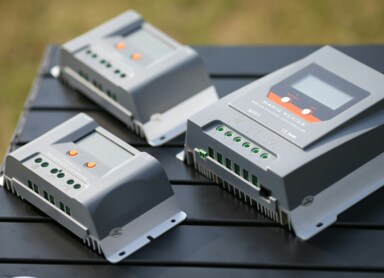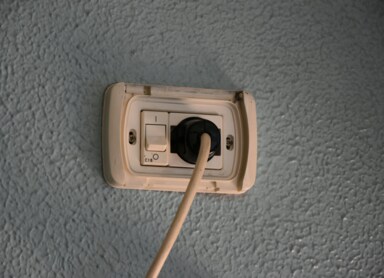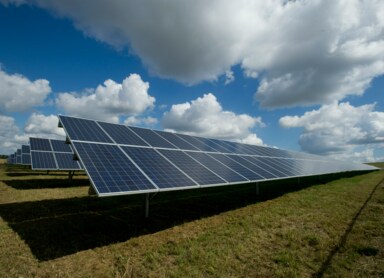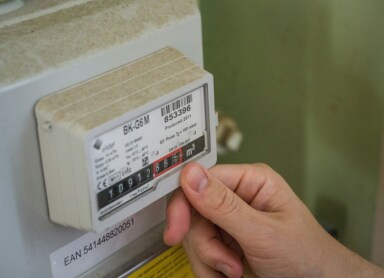How to save electricity every day? Saving electricity at home
Between 1999 and 2022, electricity prices for households increased by nearly 190%, and costs continue to rise. Although the government has introduced various protective measures in recent years, many families still pay a high share of their income for electricity. So how can you save electricity on a daily basis to relieve your household budget in a meaningful way?
How to Save Electricity Every Day — Practical Tips
To begin with, it’s worth noting that electricity bills for businesses and households are two very different worlds. Measures such as the freeze on maximum electricity prices, the energy voucher, and the suspension of the capacity charge help to cushion the impact of rising costs. Still, every kilowatt-hour consumed has to be paid for. Since the price itself cannot be negotiated — it is set by the supplier — the best approach is to focus on reducing the number of kilowatt-hours you use.
Saving electricity at home may seem like a complicated task. After all, a household is not an industrial company, where you can simply turn machines on and off or sign a DSR (Demand Side Response) contract. Household demand for electricity may appear fixed, making reductions seem impossible. In practice, however, there are many everyday opportunities to save energy. All it really requires is:
- Consistency – for households, a single act of saving electricity may seem small, but the cumulative effect of many small steps can be significant.
- Awareness – it’s important to pay attention to every situation that generates electricity consumption.
Simple Ways to Save Electricity in Everyday Life: 8 Solutions Everyone Can Use
There are plenty of ways to save electricity on a daily basis. Let’s look at some practical solutions that you can start applying almost immediately:
- Make the most of natural sunlight. Place your desk or reading chair near a window. Replace heavy curtains with light blinds. Use task lighting that brightens only the area you need, instead of the entire room.
- Switch to energy-efficient LED bulbs. LED lamps can last up to 50,000 hours and consume far less electricity than traditional fluorescent lights. You don’t have to replace every bulb at once—start with the living room, kitchen, bathroom, and home office.
- Always turn off the lights when leaving a room. For outdoor lighting, use motion sensors or timers so the lamps switch off automatically.
- Avoid leaving devices on standby. This applies especially to computers and TVs. While a modern OLED TV may consume only about 0.5 W per hour in standby mode, over a year that still adds up to a noticeable cost.
- Pay attention to energy labels when buying appliances. In addition to technical specs, check the energy efficiency class. The “new” scale runs from G to A (no longer from D to A+++).
- Manage electric heating wisely. Do not open windows when the heating is on, as the system will consume more electricity trying to maintain the set temperature.
- Run appliances only with full loads. Use your washing machine, dishwasher, or dryer only when full. This way, you maximize efficiency and reduce wasted energy.
- Keep fridge doors closed. Take out everything you need at once and close the door right away. Leaving it open for too long forces the thermostat to work harder to restore the set temperature.
Finally, remember to teach children about energy saving as early as possible. Simple habits, like switching off lights, can be learned even by young kids. The earlier they pick up good habits, the sooner you’ll notice the savings in your household budget.
How to Save Electricity at Home with Installed Photovoltaics
Households with photovoltaic (PV) systems deserve special attention. The installation itself already helps reduce electricity bills, since power is generated directly from photons in sunlight. However, having solar panels does not mean you will never pay electricity bills again.
In practice, a PV installation is rarely optimized to cover 100% of the household’s annual electricity demand. The key to maximizing efficiency lies in choosing the right panels and placing them strategically. Whenever possible, orient the panels towards the south, or alternatively southwest or southeast. Select the parameters of the cells and inverter so that they generate an amount of energy as close as possible to the actual household demand. Oversizing the installation is also not ideal, because excess electricity will be sent to the grid (or stored in a sub-account). Retrieving this surplus is usually less profitable, and the level of profitability depends on the settlement system for photovoltaics.
It is generally assumed that 1 kWp of installed power produces about 1,000 kWh per year. For a house of around 100 m², a PV system with a capacity of 3.5–4.5 kWp is usually sufficient. Keep in mind, though, that these are only estimates.
When installing photovoltaics, make sure that the panels are not shaded by trees or nearby buildings. If shading cannot be avoided, consider using microinverters instead of a central inverter, as well as power optimizers.
How to Reduce Electricity Use and Cut Bills: Switching Tariffs
Another effective way to save electricity is to change your electricity tariff. By default, households are billed under the G11 tariff, where each kilowatt-hour costs the same regardless of whether it is consumed in the morning, at noon, or at night. However, you can switch to other tariffs, such as:
- G12 – a two-zone tariff in which electricity is more expensive during peak hours (usually 6:00–22:00) and cheaper at night,
- G12w – a two-zone weekend tariff where electricity is cheaper at night, on weekends, and on public holidays,
- G12as – an anti-smog two-zone tariff designed for households that use electric cars or electric heating.
Changing your tariff is free of charge. You can do it online, by phone, or in person at your energy supplier’s customer service office. A tariff change can make particular sense for people who work shifts or travel frequently for business (e.g., cross-border drivers).
The Benefits of Saving Electricity
The most obvious benefit of saving electricity is, of course, lower bills. However, the impact goes beyond finances. Reducing electricity consumption also means less coal is burned to generate power, which directly reduces emissions. Indirectly, it supports biodiversity protection and helps preserve the natural environment in good condition.
Want to learn more about how your household can manage electricity more effectively and adopt green solutions? Check out our tips on the blog!






